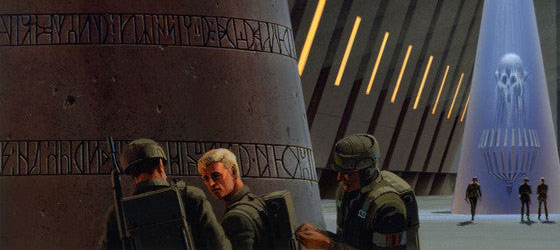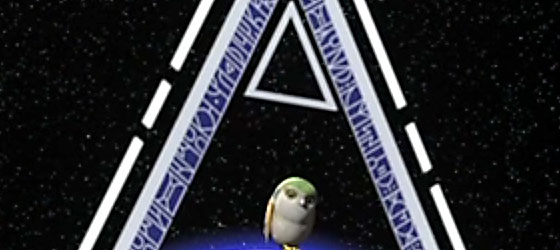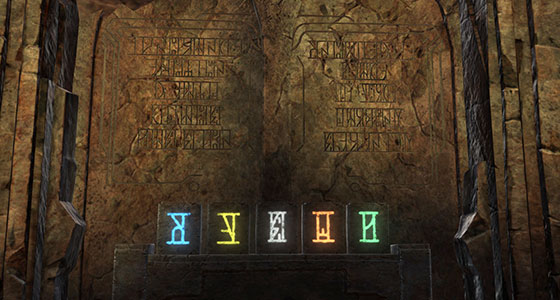Today, “This Week in Aurebesh” celebrates a somewhat surprising third anniversary! I’d like to sincerely thank anyone who has taken time to stop by and check out this silly little corner of Star Wars fandom.
To celebrate the milestone, I’ve translated some writing from Star Wars: The Old Republic that is not in Aurebesh, but still figures prominently in the latest story arc and exploration area of the ancient runes near Ood Bnar’s datacron on the planet Ossus.
When Ossus was released last year, I took a half-hearted stab at translating the runes on my own. I assumed, correctly as it turned out, that the glowing letters probably referred to keywords from the Jedi Code. However, I was stymied by the fact that the words to which the letters refer are not in the same order as they appear in the code; additionally the lines of the code were also out of order on the wall in the initial release of Ossus, making translation even trickier. Later, when the Galaxy’s Edge theme park was opened at Disney World this summer, a translation key for the runes was discovered in merchandise available to visitors.
With this new information and a game update that restored the inscription to its proper order, I was finally able to easily decipher the runes. The inscription clearly refers to important parts of the Jedi Code, but which Jedi Code?
There is no emotion, there is peace.
There is no ignorance, there is knowledge.
There is no passion, there is serenity.
There is no chaos, there is harmony.
There is no death, there is the Force.
The version above is the Jedi Code most familiar to Star Wars fans, but according to Star Wars lore, the code’s first version was rather less absolute.
Emotion, yet peace.
Ignorance, yet knowledge.
Passion, yet serenity.
Chaos, yet harmony.
Death, yet the Force.
I believe the Ossus inscription is meant to evoke the earlier version of the code since it does not include the negation of emotion, ignorance, passion, etc. Given the age of the ruins of Ossus, this strikes me as an appropriate choice.

Regarding for the language itself, I am not aware of any official name for this alphabet. As with other constructed languages, including SWTOR’s own Zakuulan, it derives from Norse runes. Furthermore, like so many other iconic images in Star Wars, the specific inspiration for this alphabet comes from the artwork of Ralph McQuarrie who included runic inscriptions on a painting of the interior of the temples on Yavin IV in the 1995 book The Illustrated Star Wars Universe. These glyphs would again appear as inscriptions inside the ancient Jedi ruins on Lothal and in the “World between Worlds” in the animated series Star Wars: Rebels. From there, examples of the writing can also be found in promotional material for the upcoming Jedi: Fallen Order video game and in Disney’s Galaxy Edge theme parks.

Most of examples of this writing seen on Rebels and elsewhere cannot be translated into English, but the Ossus inscriptions can, and they function as clever bits of world building that evoke both the spirit and the history of the Jedi and the ancient world of Ossus. A character’s discovery of these runes is only the first step in a journey across Ossus that I highly recommend that every SWTOR player take!

